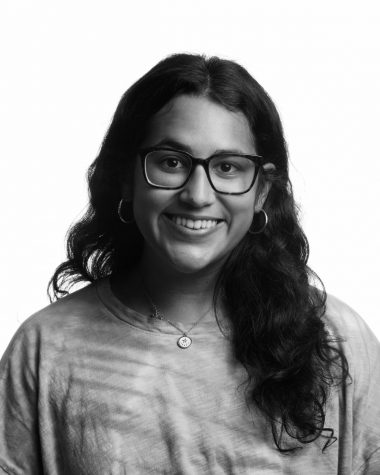Universities all over the country attempt to meet a certain equity index every year and advertise their educational programs with imagery of diverse people. In a talk by philosophy and religion professor Michael Eng’s “How to Disappear: Race and University Spaces,” Eng said this imagery proves that universities see diversity as a marketing opportunity, leaving students of color cheated of university spaces and comfort.
Sponsored by the Department of Philosophy and Religion, Eng’s talk focused on the relationship between race and university spaces. University spaces are the actual environment built and portrayed by schools. Most schools portray these spaces as an “inclusive” living and learning experience.
Eng showed a painting of a white woman and a black maid. He said the black maid painted in the scene is to show features of a race, only for the maid to be thrown into the background, just as people of color find themselves in university settings.
Eng mentioned that while people of color can be represented and acknowledged, that recognition can just be there for business purposes, just to pass that equity index. Inclusion is what people of diversity want, not seclusion of their race to prove the morale of an institution.
Eng said the university setting is a system of marketing, which is a reflection of the world outside dorms and dining halls. For diverse people, it can be an unsafe space.
Eng reminded students that universities all around the country have incidents involving white supremacy, whether it be confederate statues, white students calling campus police on innocent people of color or hateful signs displayed.
“We actually don’t recognize people as people, we recognize people in terms of what we want them to be, in terms of what they desire to be,” Eng said.
Eng showed anti-semitic symbols painted in an expression tunnel on Sept. 30, demonstrating that these acts of hate hit close to home.
“The question is, why is it so familiar, why is it so typical?” Eng said. “These kind of events are dealt with by campus administration in one way: That it’s an exception, that it’s an accident.”
Some universities, Eng said, tend to cover up acts of hate, label them as freedom of speech, or ignore them completely.
Schools that exhibit confederate statues, such as UNC-Chapel Hill, do so to please philanthropists with racist backgrounds who fund the university.
“How does not having a monument erase history?” Eng asked. “The answer is, it doesn’t.”
Eng said acts of racism and hate are neither a mistake nor the past, but they belong to the structure of universities and persist. These acts are not leading society back to racist ways, but are forming new ones
“The solution is not to get rid of the racist (acts). I want to argue for a criticism of the conditions that make possible these institutions in the first place,” Eng said
Eng encourages students to critique universities with caution, while being aware of diversity and spaces around them.
Sara Brilliant, junior sustainable development major, said she was interested in Eng’s talk because she hadn’t been to a lecture about race or taken a class talking about race inclusion, but has witnessed issues at App State such as sexual discrimination and religious discrimination.
Nina Galey, senior sociology major, came to the talk due to her interest in racial oppression and university spaces after experiencing it through friends and courses. Galey said App State is not to these acts, as she has witnessed it first hand.
“Looking around campus after you take one class specifying oppression connected to race or social identities that’s when you start to be like ‘maybe things aren’t so bleach white,’” Galey said. “A large population of our students aren’t being spoken to.”
Story by Emily Broyles


